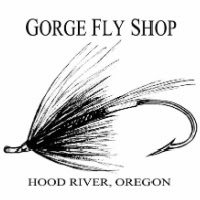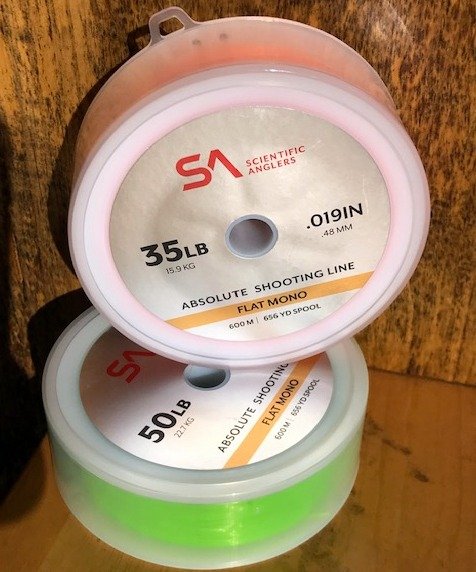Thursday, July 16, 2015
SALEM,
Ore. – The Oregon Department of Fish and
Wildlife has curtailed fishing hours on most of Oregon’s rivers to avoid additional stress
on native fish already suffering from high water temperatures and low stream
flows from this year’s drought.
Effective Saturday,
July 18, and until further notice, all waterbodies defined as streams in the
2015 Oregon Sportfishing Regulations are closed above tidewater (where
applicable) to fishing for trout, salmon, steelhead and sturgeon from 2 p.m. to
one hour before sunrise.
Angling for these species will be prohibited at all times in the Willamette River
downstream of Willamette Falls, including the Clackamas
River up to the Interstate 205 Bridge,
the Multnomah Channel and the Gilbert
River. The following
sections of the John Day River will also have complete closures: The
mainstem of the John Day River above Indian Creek near Prairie
City; the Middle Fork of the John Day River
above Mosquito Creek near the town of Galena;
the North Fork of the John Day
River above Desolation
Creek and Desolation Creek.
Some streams will
remain open for angling under normal hours because they are less prone to high
water temperature risks due to springs, tides, cold water releases from some
dams and high elevations.
Streams that will remain open for angling under normal hours are:
Northeast
Zone:
- The Wallowa River above Sunrise Road; Lostine
River above Pole Bridge Campground; Prairie Creek; Hurricane Creek; Spring
Creek; and all streams within the Eagle Cap Wilderness Area.
Southeast
Zone:
- The Malheur
River and its tributaries; the Owyhee River
below the Owyhee Reservoir; and the Blitzen River
and its tributaries above Page Springs Weir and Bridge Creek.
- The Klamath River
and its tributaries.
Central
Zone:
- The Deschutes River above Macks Canyon; the
Metolius River; the Fall River; the Crooked River (from mouth to Bowman
Dam); and Tumalo Creek.
- The Hood
River and its tributaries and the
White River and its tributaries.
Willamette
Zone:
- The McKenzie River and its tributaries; the
Middle Fork of the Willamette River below Dexter Dam; the Middle Fork of the
Willamette River and its tributaries above Lookout Point Reservoir; and
Alton Baker Canoe Canal.
- The mainstem of the South Santiam River below
Foster Dam; Quartzville Creek; the North Santiam River above Detroit Lake;
and the Breitenbush River.
Southwest
Zone:
- The mainstem Rogue River from Fishers Ferry
upstream to William Jess Dam and all tributaries upstream of the William
Jess Dam and Lost Creek Reservoir.
Angling in the mainstem
Columbia River and mainstem Snake River is not
affected by today’s action, and angling hours in these areas will remain under
normal regulations at this time. However, a Columbia River Compact/Joint
State hearing is
scheduled for 2:00 p.m. on Thursday, July 16 via teleconference to discuss
curtailment of recreational catch-and-release sturgeon fishing upstream of
Bonneville Dam on the Columbia River.
“Earlier this month, we
indicated that if these drought conditions continued, we may have to close or
restrict some fisheries,” said Mike Gauvin, ODFW’s recreation fisheries
manager. “These are difficult, but necessary actions to protect native fish
already suffering from extreme drought conditions.”
“This doesn’t mean that
all fishing has to stop.” According to Gauvin, most streams will still be open
in the early hours when water temperatures are cool, and there are many great
fishing opportunities in lakes, reservoirs for hatchery stocked rainbow trout,
warmwater fish like, smallmouth bass or crappie, as well as all of the ocean
fisheries.
“As extreme weather
events become more frequent due to climate change, we need to be prepared for
the stress these conditions will have on fish, wildlife and their habitats,” Ed
Bowles, Fish Division Administrator said. “Planning for the effects of these
changing climatic conditions presents a unique challenge for us, yet we are
committed to doing our best to enhance resiliency to climate change and avoid
significant impacts on our natural resources.”
ODFW already implemented
emergency regulations on several other rivers. In addition, trout stocking
schedules and locations have been adjusted and some hatchery fish have been
released early as a result of high water temperatures. Elevated water
temperatures have led to salmon, steelhead, and sturgeon deaths in several
rivers.
Gauvin encourages the public to report sightings of stranded fish, or other
wildlife distressed by drought, to the department and to take precautions when
fishing during these drought conditions.
On days when
temperatures soar, anglers can do their part to reduce the stress on fish by
adopting the following measures:
- Fish early in day when water temperatures are
cooler.
- Use a thermometer to check water temperatures
frequently. Stop fishing when temperatures exceed 70 degrees.
- Consider changing locations to high elevation
lakes or shaded streams near headwaters. These places are often cooler.
- Use barbless hooks so you can release fish
easily without harming them.
- Use the appropriate gear and land fish quickly.
The longer the fight, the less likely the fish will survive.
- Keep the fish in the water when you unhook it
and cradle the fish upright until it revives enough to swim away.
- Use your judgement. If conditions where you
want to fish seem especially severe (low, hot water), consider fishing
somewhere else where water conditions are better.
- Check the regulation update pages on the ODFW website before you
head out to make sure temporary emergency regulations have not been put in
place for the waters you want to fish.
Gauvin recommends
anglers check the weekly Recreation Report on the ODFW
website for updates on
stocking, water conditions and boating access.
In addition to fish and
fishing related actions, the dry, warm weather could increase the danger of
wildfires. Wildland fires can destroy hundreds, sometimes thousands, of acres
of habitat. Late season fires may also affect hunting season dates, hunting
opportunities and the condition of winter range for deer, elk and other
species. Fewer water holes means wildlife will have to travel farther for
water. Leave wildlife access to water by not camping at water sources.
Less water will also
increase competition for placement of hunting blinds amongst hunters. Setting
up a blind at a water hole is a common and lawful practice but hunters are
asked to be extra considerate of other hunters and wildlife this year. Also,
follow land manager’s regulations and don’t set up blinds too early or leave
them indefinitely. BLM allows hunting blinds to be up for 10
days. U.S. Forest
Service requires a
permit and also has a time limitation.
The Bureau of
Land Management does
not allow camping within 300 feet of water sources; U.S. Forest Service rules vary by forest and area.
See the Oregon Department of Forestry’s webpage for latest fire restrictions and check
their Corporate Closure page for information about access to
private timberland, or call the landowner.
In the effort to raise
awareness of the dire conditions that Oregon
faces this summer, Governor Brown's office has created a website for more
information,www.drought.oregon.gov, and launched the
“#ORdrought” campaign.
Thursday, July 16, 2015
CLACKAMAS, Ore. – The Columbia River will close to sturgeon fishing
upstream of Bonneville Dam until further notice under temporary rules adopted
by the states of Oregon and Washington.
The closure takes
effect on Saturday, July 18 and applies from Bonneville Dam to the Oregon/Washington
border upstream of McNary Dam, including adjacent tributaries. All sturgeon
angling, including catch-and-release, and retention is prohibited until further
notice in this portion of the river.
Fishery managers
approved the closure after reviewing survey reports that showed increased
sturgeon mortality as a result of the drought conditions in some of the
mid-Columbia River reservoirs.
“What we’re seeing
right now is higher levels of summer mortality and indications that sturgeon
are under a lot of stress this summer. This is something we can do immediately
to give them some relief,” said Chris Kern, deputy administrator of ODFW’s fish
division.
The sturgeon fishing
closure above Bonneville is the latest emergency action aimed at reducing
stress on the region’s fish populations, which are experiencing unprecedented
challenges due to high water temperatures and related factors.
Earlier today, ODFW
announced a series of statewide restrictions curtailing
fishing hours after 2 p.m. on most of Oregon’s
rivers to avoid additional stress on native fish already suffering from high
water temperatures and low stream flows from this year’s drought. Included in
this action was a total closure to all angling for trout, salmon, steelhead,
and sturgeon in the lower Willamette River and lower Clackamas River
from upstream to the I-205 Bridge. These closures also take effect Saturday,
July 18. However, normal
fishing hours remain in effect for the mainstem Columbia and Snake rivers.
Fish
biologists are appealing to anglers to adopt additional voluntary measures that
will help reduce stress on the region’s fish. Suggestions include fishing early
in the day, moving to higher elevation lakes and ponds, shifting their focus
from trout to warmwater species, using barbless hooks, and notifying
authorities if they see mortalities or fish trapped in pools.
July 16, 2015
Contact: Region 1, Chris
Donley, (509) 892-1001, ext. 307
Region 2, Jeff Korth, (509) 754-4624, ext. 224
Region 3, John Easterbrooks, (509) 457-9330
Region 4, Annette Hoffman, (425) 775-1311, ext. 120
Region 5, Cindy Le Fleur, (360) 696-6211, ext. 6708
Drought conditions prompt fishing
closures,
restrictions on numerous rivers
OLYMPIA – State fishery managers are closing or
restricting fishing on more than 30 rivers throughout Washington to help protect fish in areas
where drought conditions have reduced flows and increased water temperatures.
The closures and restrictions take effect
Saturday (July 18) at 12:01 a.m. The changes will remain in effect until
further notice.
Fishing will be closed in some waters, and
limited in others each day to the hours between midnight and 2 p.m. These “hoot-owl”
restrictions will go into effect on rivers where fishery managers want to
reduce stress on fish during the hottest time of day.
High water temperatures can be deadly for
fish, such as trout, while diminished stream flows can strand migrating salmon and
steelhead, said Craig Burley, fish program manager for the Washington
Department of Fish and Wildlife (WDFW).
“With such extreme drought conditions in
several areas of the state, we needed to take these steps to help protect
vulnerable fish in waters where we have concerns,” Burley said. “We’ll continue
monitoring stream conditions throughout Washington
this summer and take additional actions if necessary.”
For details on the closures and
restrictions, check the emergency regulations, which will be posted tomorrow on
WDFW’s webpage athttps://fortress.wa.gov/dfw/erules/efishrules/.
Fishing closures and restrictions are
listed by region below. Today’s action does not include any rivers in Region 6
(South Sound/Olympic Peninsula). However, earlier this summer, the department
closed fishing on a section of the Sol
Duc River
to protect returning chinook during drought conditions.
Region 1 – Eastern Washington
Closed to fishing:
- North Fork Touchet
River above Spangler Creek.
- South Fork Touchet River from the mouth to Griffen Fork and above Griffen
Fork.
- Wolf Fork Touchet River from the mouth to Coates Creek and Robinson Fork.
- Asotin Creek and tributaries (Asotin Co.) from the mouth to headwaters.
- Kettle River and all tributaries (Ferry Co.) from the Barstow
Bridge to the headwaters, all
portions contained within Washington.
Hoot-owl restrictions:
- Walla Walla River (Walla Walla Co.) from McDonald
Road Bridge
to the Oregon
State Boundary.
- Touchet River (Columbia/Walla Walla Co.) from the mouth to the
confluence of the North and South forks.
- North Fork Touchet River from the mouth to Spangler Creek.
- Tucannon River (Columbia/Garfield Co.) From the Highway 12 Bridge
to Cow Camp Bridge.
- Spokane River (Spokane/Lincoln Co.) from upstream boundary at
Plese Flats Day Use Area to the Idaho State Boundary.
- Spokane River
tributaries, including Little Spokane
River and
tributaries (Spokane/Pend Oreille/Stevens Counties) from the State Route 25
Bridge upstream to Monroe Street Dam.
- Colville River and all tributaries (Stevens Co.) from the mouth to the headwaters.
- Sullivan Creek and all tributaries (Pend Oreille Co.) from the mouth to the
headwaters.
Region 2 – North Central Washington
Closed to fishing:
- Wenatchee River (Chelan Co.) from the mouth to the Icicle River Road
Bridge.
- Icicle River (Chelan Co.) from the mouth to 500 feet downstream
of the Leavenworth National Fish Hatchery Barrier Dam.
- Lake Wenatchee (Chelan Co.)
- Okanogan River from the Hwy 97 bridge upstream to Zosel Dam,
except open to game fish fishing.
- Similkameen River from the mouth upstream to Enloe Dam.
Region 3 – South Central Washington
Closed to fishing:
- Ahtanum Creek, including the north and middle forks
- Little Naches
River
- Teanaway River, including west, middle and north forks
Hoot-owl restrictions:
- Naches River from Tieton
River to Bumping River/Little Naches River
- Rattlesnake Creek
Region 4 – North Puget Sound
Closed to fishing:
- Raging River (King Co.) from the mouth upstream.
- Skykomish River (Snohomish Co.) from the mouth upstream closed to
all fishing, except the section around Reiter Ponds remains open from the
Gold Bar/Big Eddy Access (Hwy. 2 Bridge) upstream to the confluence of the
North and South forks.
- Wallace River (Snohomish Co.). From the mouth upstream including
all tributaries.
- Stillaguamish River (Skagit/Snohomish Co.) From Marine Drive upstream
including the North and South forks and all tributaries.
- South Fork Nooksack (Whatcom Co.) From the mouth to Skookum Creek, and
from Wanlick Creek to headwaters including Wanlick and all tributaries.
- Suiattle River (Skagit Co.) Tributaries Buck, Downey and Sulpher Creeks.
Hoot-owl restrictions:
- North Fork Skykomish
River (Snohomish Co.) From the mouth upstream including
all tributaries.
- South Fork Skykomish River (Snohomish/King Co.) From Sunset Falls
upstream and all tributaries, including the Beckler, Foss, Miller and
Rapid rivers and their tributaries.
- Sauk River (Skagit/Snohomish Co.) Above the Suiattle River
including the North Fork to the falls and
the South Fork to headwaters.
- Samish River (Skagit Co.) From I-5 to headwaters, and Friday
Creek upstream.
Region 5 – Southwest Washington
Closed to fishing:
- East Fork Lewis River from Lewisville
Park downstream.
- Washougal River from Mt.
Norway Bridge
downstream.
Hoot-owl restrictions:
- East Fork Lewis River from Lewisville
Park upstream.
- Washougal River from Mt.
Norway Bridge
upstream.
WDFW has also closed fishing for spring
chinook on the Grande Ronde River
in eastern Washington
due to low river flows.
For more information about drought’s impact
on fish and wildlife, visit WDFW’s drought webpage at http://wdfw.wa.gov/conservation/drought/.
"Fly Fish the World with Us"

































